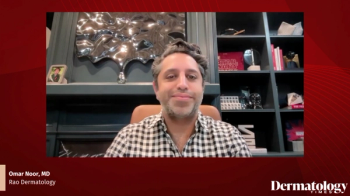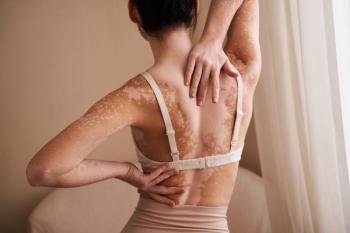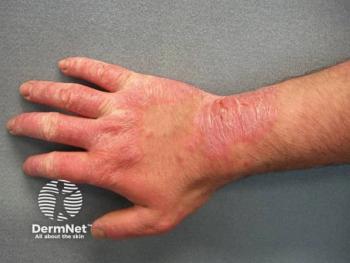
- Dermatology Times, June 2025 (Vol. 46. No. 06)
- Volume 46
- Issue 06
Ink to Impact: A Laser-Focused Mission in Justice and Dermatology
Key Takeaways
- UCSD's Clean Slate Program offers free tattoo removal to aid reintegration of formerly incarcerated individuals, integrating medical students for early clinical exposure.
- Medical students perform non-procedural tasks, enhancing clinic efficiency and gaining experience in a real-world clinical setting.
UCSD's Clean Slate Program empowers medical students through hands-on experience in tattoo removal, enhancing community health and social justice initiatives.
Service learning has become an essential component of modern medical education, allowing students to apply classroom knowledge in real-world clinical settings while addressing the needs of underserved communities. The University of California, San Diego (UCSD) has exemplified this through the Clean Slate Free Tattoo Removal Program, a dermatology-based initiative aimed at helping formerly incarcerated individuals reintegrate into society by providing free laser tattoo removal. What makes this program especially innovative is the integration of medical students into its clinical and operational framework, fostering early clinical exposure and a commitment to social justice.
Medicine and Social Justice
Initially founded in 2016, the Clean Slate Program offers monthly clinics where volunteer dermatologists and residents provide laser tattoo removal services for individuals referred through law enforcement and community partners.
Many patients seek the removal of gang-related or stigmatizing tattoos that hinder their employment prospects or personal growth. To meet increasing demand and growing student interest, UCSD expanded the program in the fall of 2024 to include a structured volunteer component for medical students.
According to Victoria Ojeda, PhD, professor at UCSD’s School of Public Health and School of Medicine, this expansion was a natural evolution. “We had seen a lot of interest...in the intersection between social justice and health,” she said in a recent interview with Dermatology Times. “Our clinic was growing, so we thought this might be an ideal time to open the doors to medical students.”
Learning Through Service
The medical student component of the program was carefully piloted before formal integration. Students receive comprehensive training, including HIPAA certification, a clinic orientation, and shadowing sessions with more experienced student volunteers. This ensures student preparedness and patient safety.
“A lot of the medical students are a little green. They haven’t had any opportunity to work with patients in a live setting,” noted Arisa Ortiz, MD, FAAD, director of Laser and Cosmetic Dermatology at UCSD, in a recent discussion with Dermatology Times. “So we always have someone with them, there’s always a resident nearby.”
Students’ roles are clearly delineated to maintain ethical boundaries. While they do not perform medical procedures such as operating the laser, their contributions are crucial to the clinic’s function. Tasks include patient check-in, managing consent forms, escorting patients, operating smoke evacuators under supervision, and providing post-procedure support.
“The students help with administrative tasks, which frees up the residents and physician team to focus on getting the laser correctly set,” Ojeda explained. “They’re learning about the clinical environment while contributing to clinic efficiency.”
Exposure and Mentorship
The program will also foster a layered mentorship system. First-year students will be paired with second-year students who will guide them through clinical processes and patient interactions. Over time, Ojeda and Ortiz hope this will build peer leadership and allow continuity across student cohorts.
This exposure to both clinical and community health issues offers a unique developmental experience early in students’ training. The longitudinal nature of the program, with repeated clinic participation, allows students to witness patient outcomes and clinical progression—an opportunity rarely available in preclinical education.
“It’s a way for the medical students to give back to the community,” said Ortiz. “Not only from the training aspect, but just from giving back—I think it’s just been a great experience overall.”
Outcomes and Impact
An anonymous survey conducted in early 2025 showed overwhelmingly positive student feedback.1 All respondents expressed a strong interest in serving justice-impacted populations, and 83% viewed the experience as relevant to a future career in dermatology, a historically marked field by gaps in provider availability.2
Students also reported that the opportunity to work closely with both faculty and marginalized patients enriched their understanding of medicine’s social dimensions. As Ojeda observed, “It gives them a very large cohort of folks to work with…populations that we know are kind of out there, but they’re in a sense hidden, because typically health care providers don’t ask about justice system involvement.”
Patients, for their part, experience a seamless clinic visit without necessarily distinguishing the roles of volunteers, residents, or physicians. “In general, I would say patients are very happy to just have the service,” Ojeda noted. “They don’t know who’s who—they’re just glad to be getting help.”
The presence of students has allowed the clinic to expand its capacity significantly. “Over the years, the number of patients we’re able to see in 1 clinic has almost doubled,” Ortiz stated.
Looking Ahead
As interest in the program grows, Ortiz and Ojeda hope the model will inspire replication. Ortiz, during her tenure as president of the American Society for Laser Medicine and Surgery, began sharing the program’s framework nationally. “We gave our members the resources to try to implement this program in other areas of the country,” she said.
Ojeda echoed this hope while underscoring the importance of leadership. “You definitely need some champions…someone community-facing that can engage with the patient population,” she advised. “We’re trying to serve a very specific population, not just anyone who doesn’t like a tattoo anymore.”
Conclusion
The UCSD Clean Slate Tattoo Removal Program exemplifies the potential of service learning in medical education. It provides early, structured clinical exposure for medical students while meeting a critical need for a marginalized population. With thoughtful design, mentorship, and community partnership, it serves as a replicable model that aligns clinical training with social responsibility.
Ojeda aptly summarized, “Everybody wins. It’s a great opportunity for our residents, our students, and most importantly, our patients.”
References
- Ojeda VD, Nguyen HA, Nandamuri S, et al. A protocol for dermatology service learning for medical students: supporting laser tattoo removal for adults impacted by the justice-system. Lasers Surg Med. 2025;57(3):284-290. doi:10.1002/lsm.70005
- Duniphin DD. Limited access to dermatology specialty care: barriers and teledermatology. Dermatol Pract Concept. 2023;13(1):e2023031. doi:10.5826/dpc.1301a31
Articles in this issue
5 months ago
Dermatology Times June 2025 Print Recap6 months ago
Nail Trends That Challenge Clinical Diagnosis6 months ago
Inside IL-17 Inhibitors Advancing Psoriasis CareNewsletter
Like what you’re reading? Subscribe to Dermatology Times for weekly updates on therapies, innovations, and real-world practice tips.



















